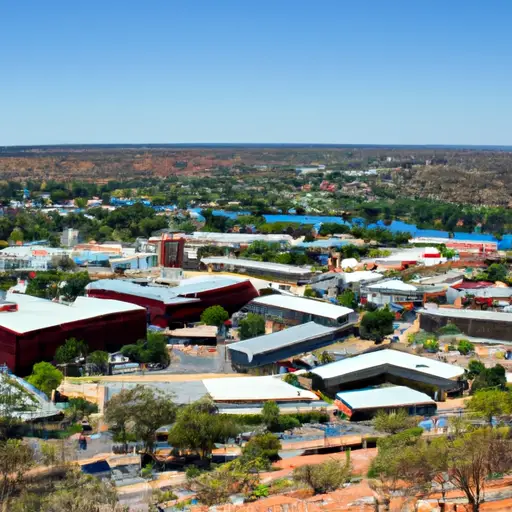Mount Isa : Interesting Facts, Famous Things & Information

- By
- Aparna Patel
- |
- 9 Jul, 2023
- |

Mount Isa is a thriving city in North West Queensland, Australia. It is the largest city in the region and one of the largest copper mining centers in the world. But Mount Isa was not always the site of such a prosperous industry – in fact, its beginnings were much less grandiose. In this blog, we’ll be exploring some of the interesting facts and famous things associated with Mount Isa, as well as other important information about the city. Discover why Mount Isa is known as a ‘Copper City’, why it has the nickname ‘The Oasis of the Outback’, and find out what other attractions and landmarks are found here. Whether you’re looking for a fun day out or wondering more about this unique town, this blog has all the information you need!
Table of Contents
History & Information About Mount Isa City
Mount Isa is a city located in the Gulf Country region of Queensland, Australia. The city was founded in 1923 and currently is the administrative centre of the City of Mount Isa, which is a local government area. The city is in the heart of the mineral-rich Isa Region and is one of the most productive mining areas in Australia, with six large mines and a processing plant producing copper, lead, zinc and silver concentrates and exporting them to markets around the world. With a population of over 25,000 people, Mount Isa is Queensland’s second largest inland city.
Mount Isa is the largest community in the region and is serviced by the Mount Isa Hospital, Mount Isa Police Station, and the City of Mount Isa Council. The city is home to an array of different tourist attractions, from scenic parks to the world-renowned Outback at Isa tourist centre. Popular activities in the area include four-wheel-driving, fishing, and camping, while different seasonal events such as rodeos and festivals, as well as annual fishing and mining competitions, are also held throughout the year.
Mount Isa is also considered an important Aboriginal cultural centre, with numerous local Indigenous tribes and language groups represented in the area. The city has a long history of Aboriginal settlement, and the more recent presence of various government services and civil organisations has enabled the traditional Indigenous culture to flourish.
Interesting Facts About Mount Isa City
1. Mount Isa is famous for its rich mineral deposits, which New Zealand Company discovered in 1923. Along with copper and lead, the area also produces silver, zinc, and a trace of gold.
2. Mount Isa was named after William and Isabelle Isa, who were prominent members of the local gold search party.
3. Home to around 23,000 people, Mount Isa is the largest city in remote inland Queensland, and the tenth largest in Australia.
4. The city experiences some of the harshest summers in Australia, due to its inland location. The heat is often so hot that the grass dies, and even water evaporates in the sun.
5. Mount Isa is the only major city in the world that has an underground hospital. It was designed to protect from heavy air raids during the Second World War.
6. Mount Isa has the world’s widest-ranging population of emus, as well as many other native Australian animals.
7. The city has the highest number of pubs per capita in Queensland; there are 50 pubs in total.
8. The average annual rainfall in Mount Isa is 591mm, making it one of the driest cities in Australia.
- Bunbury : Interesting Facts, Famous Things & Information
- Lismore : Interesting Facts, Famous Things & Information
What is Mount Isa known & Famous for
Mount Isa is known for its rich mineral resources, particularly copper, lead, and zinc. It is also known as the “city beneath the oasis” due to its location in the middle of the dry Gulf Country of Queensland. Mount Isa is also famous for its outback lifestyle and its diverse outdoor activities, such as fishing, camping, and rock-climbing.
- Geraldton : Interesting Facts, Famous Things & Information
- Darwin : Interesting Facts, Famous Things & Information
What Is It Like To Visit In Mount Isa City?
Mount Isa is a friendly and vibrant outback mining city located in North West Queensland. It’s a great spot for visitors to explore the outdoors, have an adventure and learn more about the local culture and history. The highlights of visiting Mount Isa include the scenic surrounds of the city and surrounding towns, outdoor activities such as exploring the rivers or Lake Moondarra, sampling delicious local dishes and beverages, and learning about the local mining history and culture. There’s plenty of shopping, cafes, galleries and pubs to enjoy too.
Search Posts
Latest posts
Popular posts
-
5 Mar, 2024
Why prohibit engine braking?
-
5 Mar, 2024
How to avoid drinking vodka?